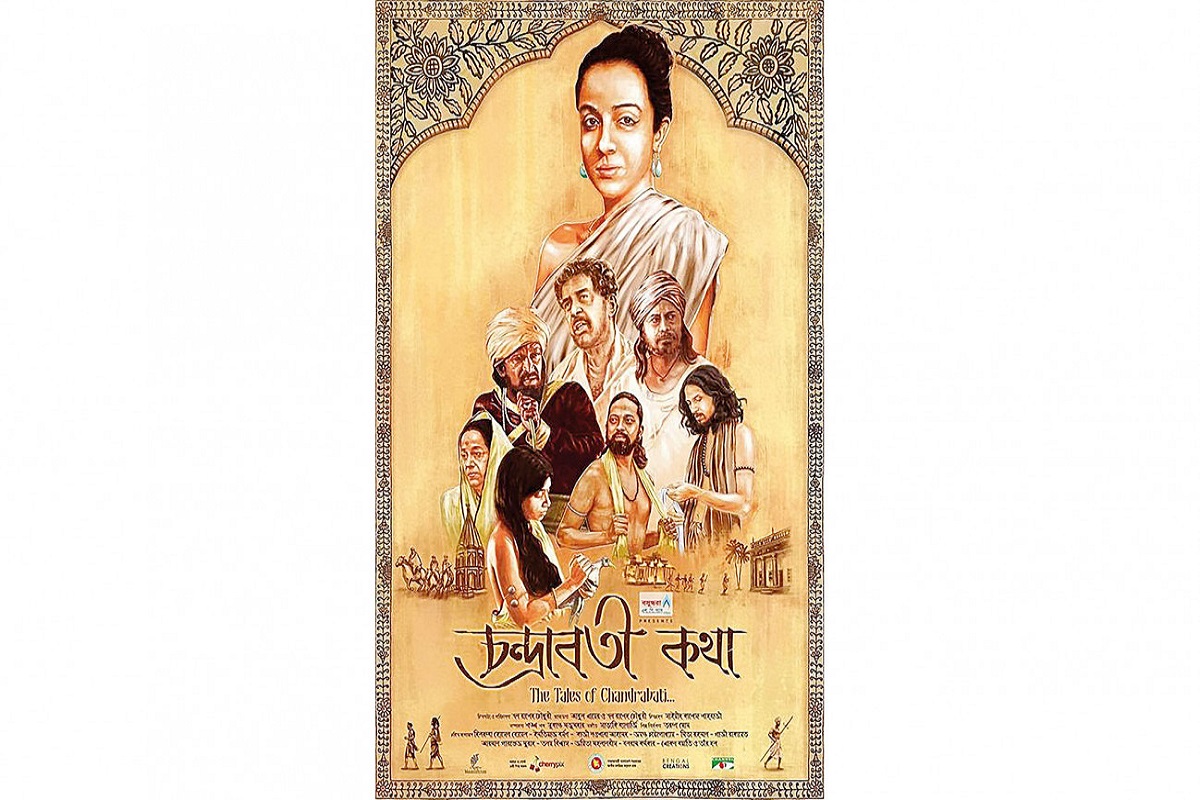In a time when Bangladeshi film industry is grievously experiencing the dearth of powerful narrative and proper storytelling; be it commercial or historical or any other genre, Chandrabati Kotha (The Tales of Chandrabati) directed by N. Rashed Chowdhury shows some light for the industry.
His courageous attempt to portray the life of the first feminist poet of Indian sub-continent, Chandrabati, took more than five years of pre-production works including research work, collecting ballads from a particular region of Bangladesh, Kishoregonj, etc. makes the film worthy of grabbing people’s attention particularly for academics and for those who are lovers of historical genre. Finally, it was released in October, 2021.
Advertisement
Set in the 16th century, this period drama explores not only the elegiac life of Chandrabati but also tries to capture the contemporary social and political life where several plots go hand in hand.
The story begins with ballads of a contemporary famous bayati (an age-old Bengali village minstrel storytellers) Nayanchand Ghosh- found in Mymensingh Geetika (Ballads of Mymensingh)- performing his lyrics based on Chandrabati’s love-life. However, her love-life ends in tragedy with the betrayal of her childhood lover Jayanand who is also a poet. He leaves her on the eve of marriage for another woman.
From this point onward, her life takes a turn to another direction, a life of seclusion that probably paves the way to think deeply about life and connect herself with the sufferings of Sita in the Ramayana. Heavy-hearted Chandrabati, the daughter of veteran poet Dwij Bangshi Das who is the composer of Manasa Mangal, decides to spend the rest of her life in the devotion of God Shiva and write her own version of Ramayana.
Previously apprenticed under and trained by her own father in the composition of lyrics, this first Bengali feminist poet is seen in the movie questioning the presentation of Sita in the epic- Sita forced to prove her chastity through walking on fire- that is why her version of Ramayana becomes a story of Sita instead of Ram metaphorically representing years of subjugation of women.
Director of this movie N. Rashed Chowdhury in one of his writings about this movie says, “According to some experts, Chandrabati’s version of Ramayan is actually Sitayan! It hardly talks of Ram; rather becomes an elegy of Sita.”
Apart from weaving the journey of Chandrabati, other plots including portrayal of the Dewans of that time and the life of the followers of Vaishnabites are also found narrated in the performance of the bayatis that makes its audience a part of the journey and takes them back to a 400 years old Bengali riverine village. However, the story of Dewans seems to be loosely connected with the eponymous character of the movie.
Produced by the government and Bengal Creations this 105-minute long biography stars Dilruba Hossain Doyel as Chandrabati, Imtiaz Barshan as Jayananda, Jayanta Chattopadhay as Dwij Bangshi Das, Gazi Rakayet as Dewan, Arman Parvez Murad as Qazi among others. Brilliant performance both from the veteran actors and the junior rising stars adds another dimension. Particularly, Doyel’s role as Chandrabati is more of acting and giving expressions with few dialogues provides a realistic depiction of the central character.
Excellent music composition by Satyakee Banerjee, a folksong artist from Kolkata, creates an ambience more connected to the soil, giving the spectators an opportunity to have an authentic taste of medieval rural Bengali music.
Upon watching this movie, one realizes that the illustration of the story against the backdrop of the sixteenth century and the presentation of characters with local language in their tongues was the most challenging task for the director.
But the movie maker triumphs over this difficult test and shows his craft with stupendous cinematography, costume design, and exclusively the delivery of dialogue in dialects. In short, it can be said that this biographic drama added a new dimension to the history of Bangladeshi movie for it will invoke creative people to dig deep the riches hidden under the soil. Therefore, watching this cinema is simultaneously experiencing a significant time and feeling the root.
Abdullah Al Mamun is a lecturer in the department of English at University of Skill Enrichment and Technology (USET).











